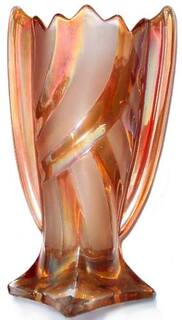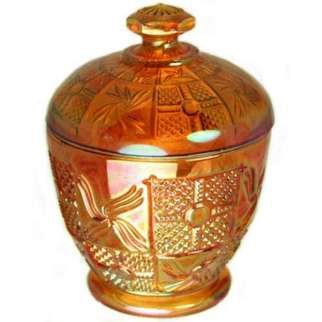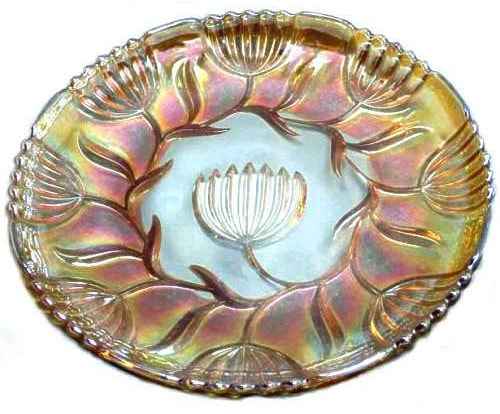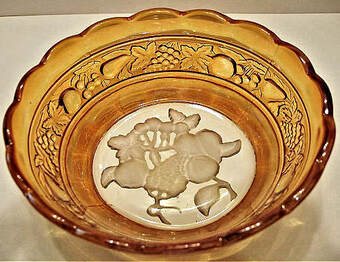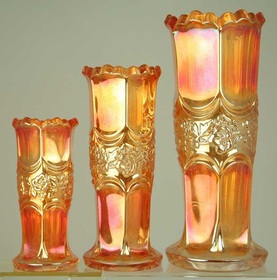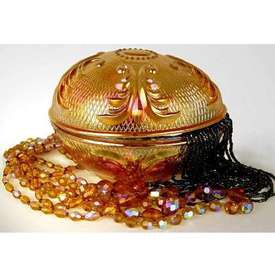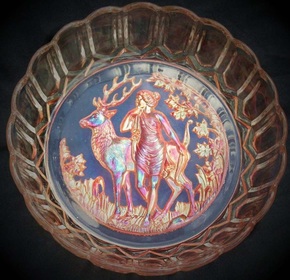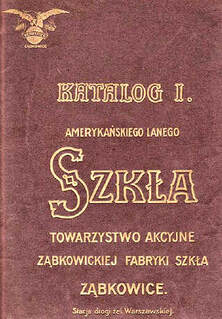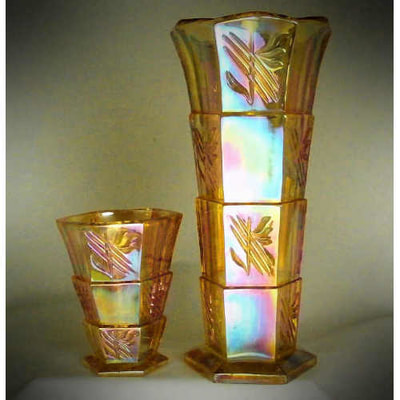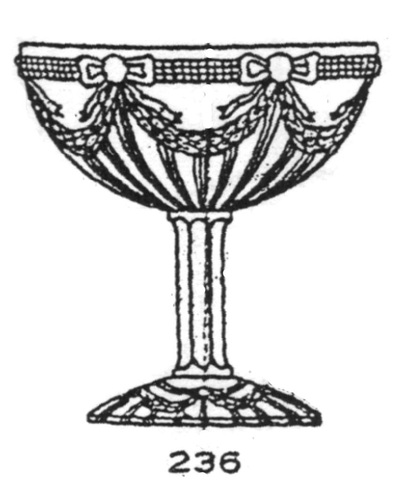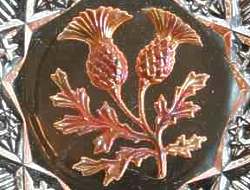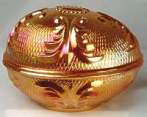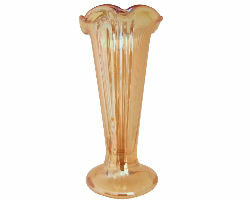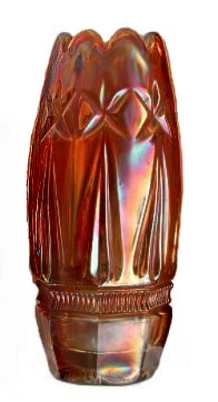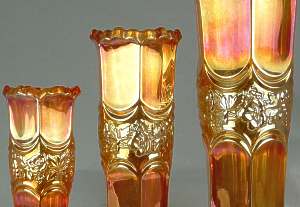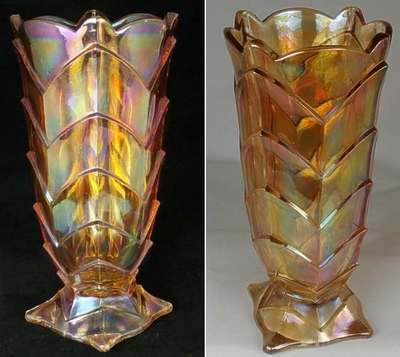Poland
|
Carnival was made in Poland in the 1920s and 30s, by several glass factories.
Probably the most prolific were Hortensja and Zabkowice / Zombkowice, although others such as Stolle Nieman and B. Morawski also produced some notable items. Hortensja Credit for uncovering Hortensja as a maker of Carnival Glass goes to Malcolm and Hilary Ross, who (whilst working in Poland) came across a 1936 catalogue of the company. Through our subsequent study of the catalogue found by them we have been able to identify a wide range of items produced in Carnival by Hortensja. One of their signatures was an exuberant Art Deco style, along with contrasting effects and “textured” finishes. A mixture of vibrant marigold and white frosting can sometimes be found and a marigold and clear combination was also used. |
Tulips, oval plate, Hortensja
Fruits and Flutes bowl, marigold and frosted, Hortensja. Courtesy Barbara Harriman
|
Zabkowice / Zombkowice*
The Zabkowice glass works was built by the Czech glass maker, Josef Schreiber Jnr. in 1883 with production beginning in 1884. It was located in Ząbkowice - a district of Dąbrowa Górnicza (a town in Silesia). In the past it was a separate administration unit and its development was connected with the activity of the glassworks. Nowadays, Ząbkowice is just a part /district of Dąbrowa Górnicza. Our grateful thanks to our friend, Beata Pawlas, for her help and information.
Our research showed that Zabkowice made significant amounts of Carnival Glass, including the rare and unique Renaissance Egg, and most of the wonderful “Golden” patterns, such as Diana the Huntress (below) and the Butterfly Catcher.
In a major, new four part exposé, we share the results of our extensive research into the Golden Patterns and list all the currently known patterns, of which there are over 20 so far. Read all about the Golden Patterns in Golden Treasures.
Investigation into production by other factories in Poland has also been carried out by British researcher John Hodgson, and many more examples of Carnival have recently been identified thanks to intensive collaboration between researchers.
The Zabkowice glass works was built by the Czech glass maker, Josef Schreiber Jnr. in 1883 with production beginning in 1884. It was located in Ząbkowice - a district of Dąbrowa Górnicza (a town in Silesia). In the past it was a separate administration unit and its development was connected with the activity of the glassworks. Nowadays, Ząbkowice is just a part /district of Dąbrowa Górnicza. Our grateful thanks to our friend, Beata Pawlas, for her help and information.
Our research showed that Zabkowice made significant amounts of Carnival Glass, including the rare and unique Renaissance Egg, and most of the wonderful “Golden” patterns, such as Diana the Huntress (below) and the Butterfly Catcher.
In a major, new four part exposé, we share the results of our extensive research into the Golden Patterns and list all the currently known patterns, of which there are over 20 so far. Read all about the Golden Patterns in Golden Treasures.
Investigation into production by other factories in Poland has also been carried out by British researcher John Hodgson, and many more examples of Carnival have recently been identified thanks to intensive collaboration between researchers.
|
* Ząbkowice and Zombkowice? What is the difference?
Our friend in Poland, Beata Pawlas, has helped us to understand why there are two versions of the name. The usual spelling of the word in Poland is Ząbkowice - note that the letter "a" has a tail underneath, called an ogonek. It alters the sound of the letter "a" to "om" making the pronunciation much like Zombkowice. Thus, the word Zombkowice was used when it was not easy or possible to use the special letter ą in the word Ząbkowice. It's that simple - it's all down to linguistics and pronunciation. Both words are pronounced the same - Zomb-coh-veecher. Grateful thanks to Beata for helping us to understand this. Ząbkowice catalogue cover, right, courtesy Siegmar Geiselberger
|
Read and see more about Polish Carnival Glass - click on any image.
